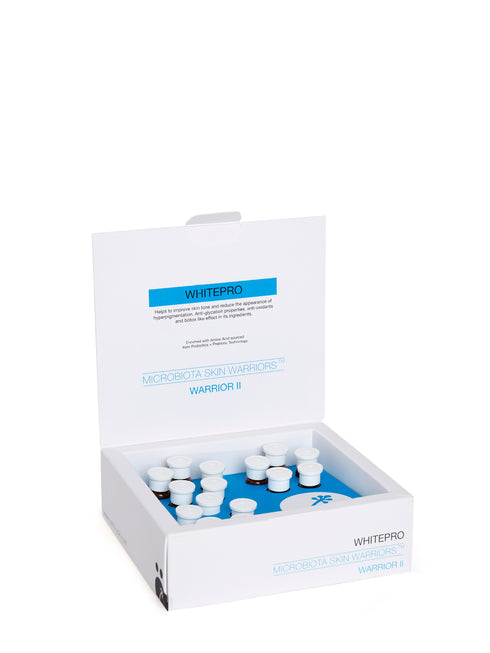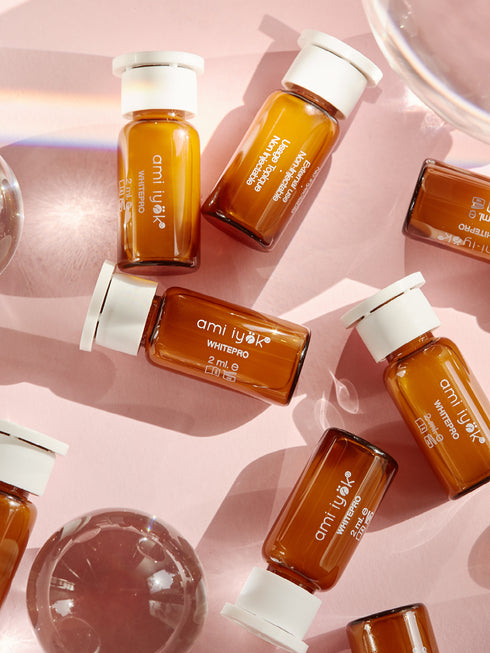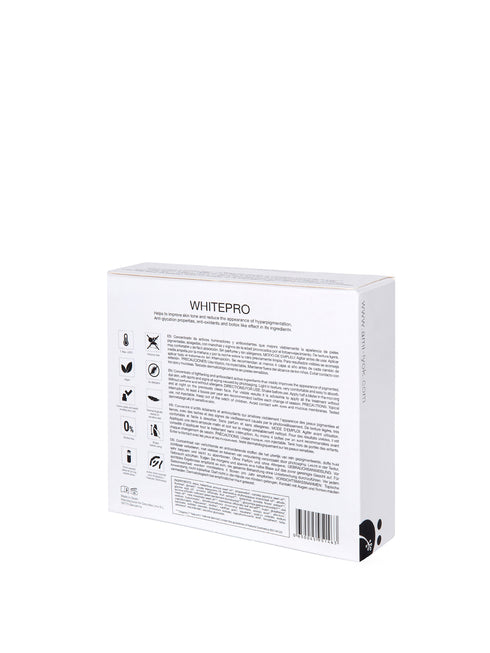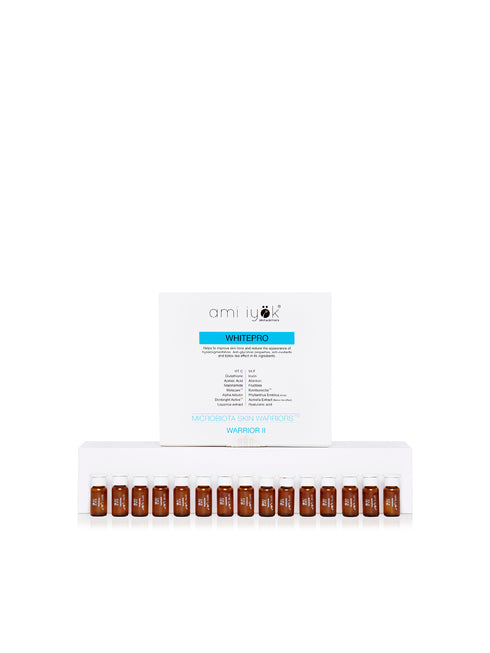















Welcome to Ami Iyök’s SKINWARRIORS MICROBIOTE:
The most advanced line of organic cosmeceuticals based on the science of the microbiome. The skin is the most extensive organ of the human body. Our skin is home to an ecosystem of diverse microorganisms: bacteria, fungi and viruses. Most of these microorganisms that inhabit our skin are commensal. Maintaining this microorganism ecosystem has many benefits for our skin and our organism. One of his main works is to prevent the colonization of other pathogenic microbes responsible for skin problems.
Therefore, maintaining our healthy microbiome is to prevent infections and skin diseases. Our microorganisms defend our skin by using mechanisms to produce substances toxic to pathogens that prevent them from adhering to skin cells.
The microbiota of the skin is the term used to describe the collection of microorganisms that live in our skin. More specifically, it refers to the genomes of all these microbes, including living bacteria, fungi, protozoa, viruses and mites. In general, the microbiota of the skin is similar between different individuals, although it is never exactly the same. The Environment and age are examples of factors that affect the variation that exists. The abundance of microbes that live inside and in the human body is enormous, with a total number of microbial cells that outnumber human cells from 10 to 1. The skin is the second most common body site for microbes, next to the intestine. Bacteria are the most common skin microbes, although healthy and normal skin also It can harbor fungi, viruses and mites. The resident microbes are found in the upper epidermis, collected around the Hair follicles.
Examples of resident microbes include the following:
Staphylococcus
Brevibacterium
Micrococo
Malasezzia
Corynebacterium
Dermabacter
Microbes are present on the entire surface of the skin, but bacterial species vary depending on the site of the body, which is classified into one of three types: dry, wet or fatty. The dry body sites harbor the greatest variety of microbes, since they have a high exposure to the environment. The most common microbes are coagulase negative staphylococci and examples of dry anatomical sites include the hands, feet, legs and forearms. The wet sites of the body include under the breasts, the groin, between the toes and the folds of the elbows. Corinebacteria are abundant in these sites Areas of oily or sebaceous skin include the trunk, neck and head. Sebum is secreted at these sites, which allows Demodex mites to bloom and allow the growth of a fungus called Malasezzia. It may be that all this may sound strange to you and you may even think that you do not want to have all these little bugs on your skin. Nothing could be further from the truth! Take care of the commensal microorganisms will make your skin look healthier and stronger compared to others we do not want.
How are these microorganisms that inhabit my skin?
The different microorganisms of the skin are classified according to how they affect us. Diners are “friendly” microbes; They benefit from living on our skin, usually without causing any adverse effects. Symbionts are microbes that benefit from living on the skin and benefit the human host in return. Pathogens are microbes that cause diseases. Most microorganisms in the skin are commensal. These can prevent the colonization of other pathogenic microbes by depleting the nutritional sources that microbes harmful they require to survive and produce toxic substances that prevent pathogens from adhering to skin cells. Microbes can cause various conditions infectious and non-infectious of the epidermis, dermis, subcutis and hair follicles. Infections vary from mild and harmless to severe but the factors that make the infection more pathogenic include, among other factors, having the skin barrier broken to a skin condition such as dermatitis, for example. What can weaken my Microbiome? This ecosystem is a very fragile equilibrium. Alterations in the skin barrier due to hormonal changes, immune factors, aggressive medical treatments or even stress modify the composition of the skin microbiome.
These factors have been linked to the health of the skin. Alterations or the balance of Microbiome are directly related to the presence or worsening of skin conditions. The alteration of the ecosystem of microorganisms is directly related to acne, rosacea, various allergies, eczema or even with the acceleration of the aging process of the skin cells.
At Ami Iyök we believe that the best beauty is the natural one. A healthy and luminous skin gives the best version of our face, giving to show our smile and any product that we let’s apply later To maintain a healthy skin it is vital to take care of our microbiota. This will help us maintain a beautiful and young skin. Based on this philosophy, the Microbiota are born SkinWarriors, a series that has only one objective, to keep the microbiome healthy for radiant skin. The importance of protecting the natural skin barrier and maintaining the fragile balance of an optimal level of beneficial bacteria and commensals has proven to be vital for the health of our skin, for a radiant, soft and healthy complexion.
We launched the new line of MICROBIOTA SKINWARRIORSTM ampoules to care for, repair and maintain all the commensal microbiota that are in our skin. face. We realized that many times, skin conditions had a lot to do with the state of our microbiome. For this reason we decided to create solutions to specific concerns, all with one thing in common: to benefit the commensal bacteria, to make them stronger and maintain a healthy skin and a clear action Slow Ageing, with assets to prevent and care for the premature aging of the skin.
Our second release within the MICROBIOTA SKINWARRIORS range is WHITEPRO, specific for skins with spots due to various causes, especially for photoaging.
Skin hyperpigmentation is the result of an increase in melanin in melanocytes or an increase in melanocytes when the skin is exposed to the sun, as they act as protection against UV rays that have very harmful effects on the skin. It can also be produced by certain medications such as phenothiazines or antimalarials.
AQUA, HELIANTHUS ANNUUS SEED OIL**, PROPANEDIOL*, CAMELIA JAPONICA SEED OIL**, FRUCTOSE*, GLYCERIN*, OXALIS TRIANGULARIS OIL, EREMANTHUS ERYTHROPAPPUS BRANCH/LEAF OIL**, ARBUTIN, GLYCINE SOJA OIL*, EMBLICA OFFICINALIS FRUIT EXTRACT***, SPILANTHES ACMELLA FLOWER EXTRACT***, SACCHAROMYCES / XYLINUM/ GREEN TEA FERMENT (KOMBUCHA)***, GLYCYRRHIZA GLABRA ROOT EXTRACT***, ZEA MAYS OIL**, ROSA MOSCHATA SEED OIL***, ROSMARINUS OFFICINALIS LEAF EXTRACT***, INULIN*, GLUTATHIONE*, SODIUM HYALURONATE*, DIMETHYLMETHOXY CHROMANYL PALMITATE, AZELAIC ACID**, ALLANTOIN*, CAPRYLIC/CAPRIC TRIGLYCERIDE*, LECITHIN*, XANTHAN GUM*, SQUALANE*, SODIUM STEARATE, SODIUM BENZOATE, SORBITAN STEARATE, POTASSIUM SORBATE, CAPRYLHYDROXAMIC ACID*, TOCOPHEROL*, BETA-SITOSTEROL*, NIACINAMIDE*, ASCORBYL GLUCOSIDE. *** Organic ** Natural * Natural derived Under the guidelines of Natural Cosmetics ISO 16128
Apply to a clean face after a gentle cleansing with Green Shaman. Half ampoules in the morning and half ampoule at night. It can be alternated with Booster Calm 360 on skin prone to redness and inflammatory processes in general. Several boxes followed by continuous uninterrupted treatment are recommended to achieve visible results.


